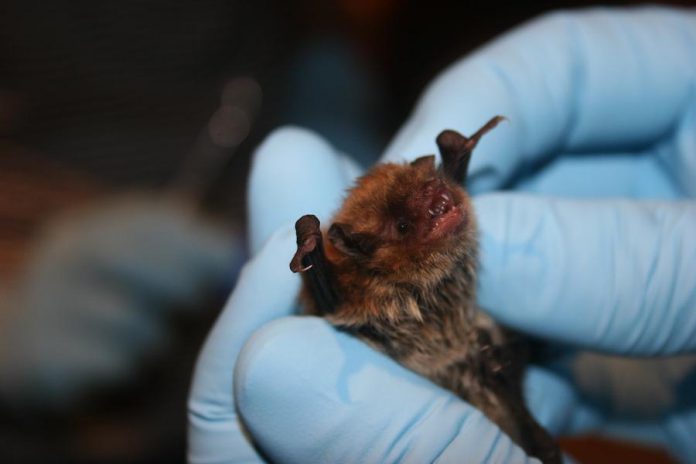
The Haliburton, Kawartha, Pine Ridge District Health Unit wants to speak with a person who handled a bat in Lindsay that later tested positive for rabies.
The health unit says the person moved the bat from the road and placed it in a tree at the corner of Kent Street West and Adelaide Street in Lindsay at around 5 p.m. on Friday, March 14.
After the bat was transferred to a wildlife sanctuary, it began showing signs of illness. The bat was sent for testing and was confirmed to be positive for rabies.
The health unit is concerned the person who handled the bat may have been exposed to rabies and is asking them to call 1-866-888-4577 ext. 5006 to confirm if they were bitten or scratched and to determine if they need to seek medical attention immediately.
“This serves as a reminder to our community to please stay away from bats and other animals that can carry rabies,” says the health unit’s manager of environmental health Richard Ovcharovich “Humans are at risk of infection if they’ve been bitten or had direct contact with an animal’s saliva, through open wounds or scratches.”
Rabies is a virus that affects the central nervous system of warm-blooded animals, including humans. The virus is transmitted when there is contact with the saliva of an infected animal through a bite, lick, or scratch.
Once signs of rabies appear in any animal (including humans), the disease is almost always fatal. However, a series of vaccinations and treatment with rabies antibodies can prevent infection in humans in most cases, if administered soon after exposure.
The animals that most often transmit rabies in Ontario are bats, foxes, skunks, and raccoons.
Although most animal bites are readily apparent, bites inflicted by bats can be harder to notice, especially if it involves an infant, child, or those with cognitive impairments.
When it comes to bats, the health unit offers these tips:
- If you suspect you may have been bitten or had direct contact with a bat, immediately report this to your family doctor and your local health unit. Direct contact is defined as the bat touching or landing on a person.
- If you find a bat in your house but there is no direct contact and no one has been bitten or scratched, open windows and doors in the area to the outside, close off the rest of the house, keep people and pets away, turn off lights, and leave the bat for a few hours to allow it to leave. If it does not leave, call an animal control or a pest control company for assistance.
- If you are bitten or scratched by a bat that is discovered in your home, leave the room, close the door, and contact a professional pest control company or wildlife removal company.
- Do not touch a bat with your bare hands. If there was no human contact (bite or scratch), open a window, and allow the bat to get out.
- If you have bats living on your property and want to remove them, contact a professional pest control company or wildlife removal company.
- If you discover a bat outdoors that is injured, acting strange, or dead, do not touch it.
- As bats can transmit the rabies virus to dogs and cats, ensure your pets are up to date on their rabies vaccinations and keep dogs on a leash under your control.
- Bat-proof the home. If bats are found in the home, seek advice from an animal control or wildlife conservation authority. If doing it yourself, carefully examine your home for holes that might allow bats entry into your living quarters, then take steps to seal them. For instance, caulk any openings larger than a quarter-inch by a half-inch, ensure all doors to the outside close tightly, and use window screens, chimney caps, and draft-guards beneath doors to attics.
This story has been updated with a correction to the phone extension provided by the health unit.


























